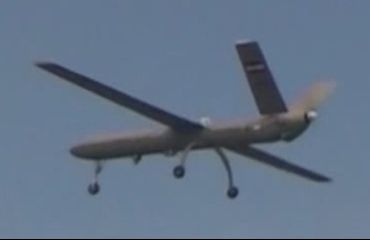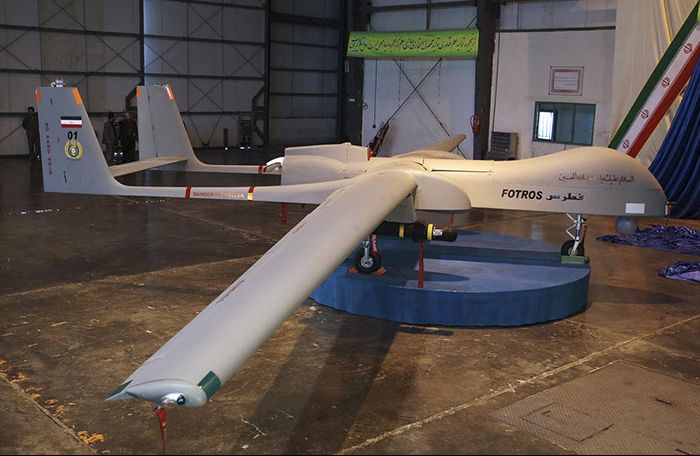Another feature that protects the drone is its flight altitude, estimated at over eight thousand meters. Moreover, thanks to a safety system installed on board, the drone would be able to land in a safe place should technical problems arise during the flight. Finally, if recovery is not possible, the drone would be able to disintegrate so as not to deliver sensitive technology to the enemy.
The "Sarallah", presented Sunday to the country's press, has a cruising speed of 160 km / h for 60 minutes of flight. If activated, the security system limits the flight to 40 minutes.
Beyond the real capabilities of Iranian drones, it is worth noting the enormous progress made by Tehran in the design of unmanned aircraft.
Last November, Iran presented a newly developed drone called "Ababil-3", which would be able to fly at a maximum altitude of 4.600 meters. "Ababil-3" would be able to fly for eight hours and carry out reconnaissance missions that it would carry out thanks to its high-definition cameras installed on board.
Last September, during the military parades in front of the mausoleum of the founder of the Islamic Republic, the late Imam Khomeini, Iran showed the world another drone called "Sadeq-1".
The "Sadeq-1" would be a degree of flying at a maximum altitude of 8.000 meters at supersonic speed. The spearhead of Iranian drones, would be the "Fotros", presented in November of the 2013. A drone capable of flying for more than thirty hours, at 25 thousand meters and "developed for combat and reconnaissance missions".
The "Fotros"
On November 18, 2013, Iran unveiled a new drone that would be able to remain airborne for more than thirty hours. The drone, called “Fotros” (final photo), would be able to carry out reconnaissance and combat missions with a range of 1.250 miles. It would therefore cover much of the Middle East including Israel. Iran has long claimed to have managed to decode the technology of the Rq-170 'Sentinel', a CIA drone that - according to the Islamic Republic - was captured in December 2011. The 'Sentinel' was shot down, but not destroyed, after entering Iranian airspace from its eastern border with Afghanistan. The United States has always denied the episode.
Since the 1980, Iran has pursued a program of "military self-sufficiency" and frequently announces fighter jets, tanks, missiles, submarines, torpedoes and drones to the world. It is also true that most of the media presented to the public are simple mock-ups used for propaganda purposes. The thought goes to the Qaher-313 fighter.
 Iran continues development The "Fotros" would appear similar to another new drone that Iran presented in September of the 2012. It is not yet clear whether the "Fotros" is a completely new model or an updated version of the "Shahed-129" (photo on the right).
Iran continues development The "Fotros" would appear similar to another new drone that Iran presented in September of the 2012. It is not yet clear whether the "Fotros" is a completely new model or an updated version of the "Shahed-129" (photo on the right).
The "Shahed-129" is a reconnaissance and combat drone capable of flying for 24 hours with a radius of 2000 km. He can be armed with the multi-role air-to-ground missile "Sadid-1", which also equips another drone, the "Karrar". The "Shahed-129" entered mass production last September of the 2013, a year after its presentation. The configuration of the Shahed-129 is a cross between the Israeli "Hermes 450" and the English "Watchkeeper WK450".
Franco Iacch

(photo: Iranian Defense Ministry / web)












